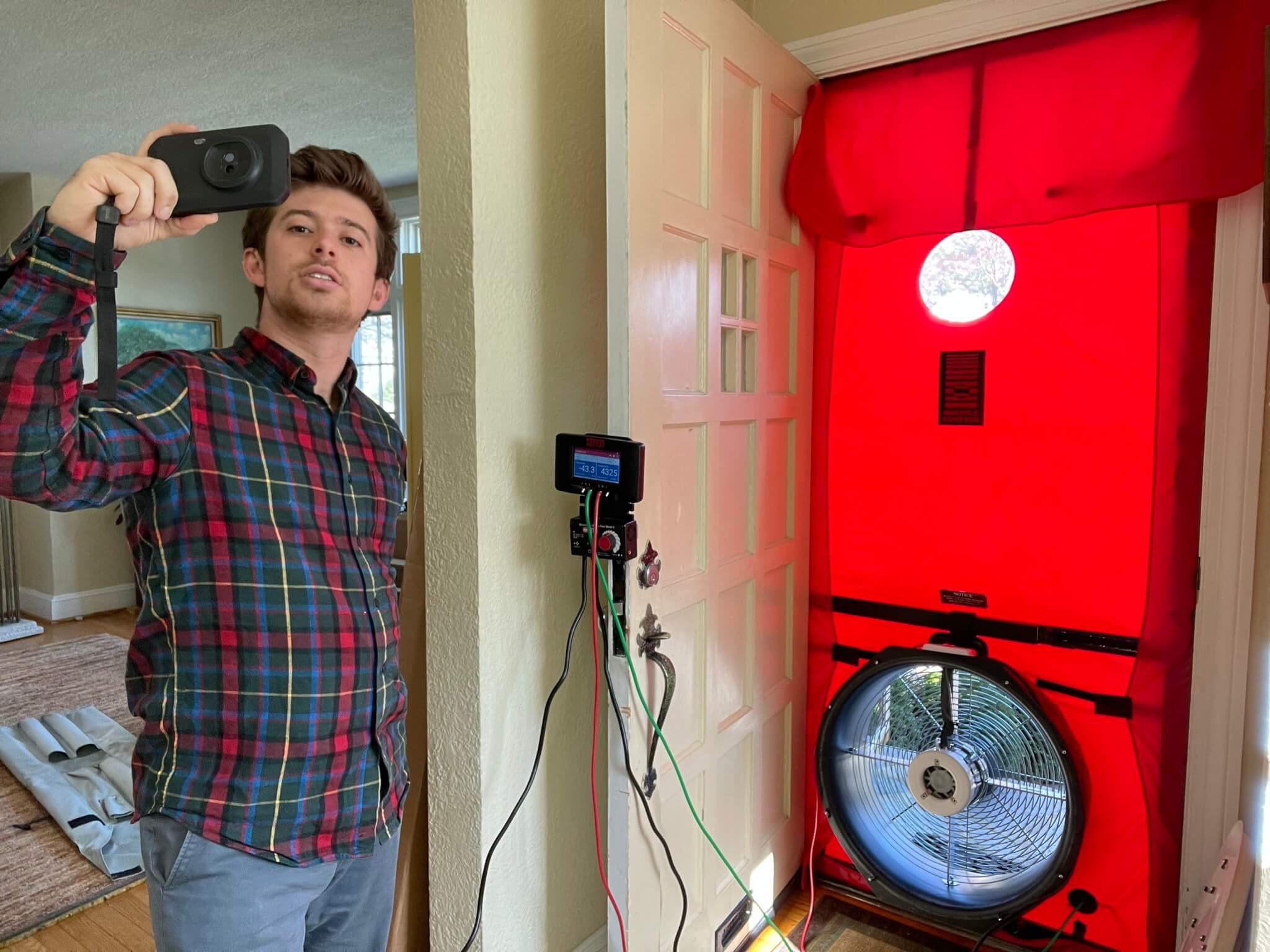What Is A Blower Door Test?
This important evaluation shows where leaks are occurring and how much the home is leaking overall.
One of the common reasons a customer will request an energy audit is to find where leaks are occurring within their home. They can feel leaks but they don’t always understand where they’re coming from. The goal of the blower door test is to find those leaks and how much air is passing through the home. This blog post will outline how a blower door test works and how it can be helpful.
How Does It WOrk?
Preparation
All exhaust fans including the kitchen hood and dryer must be shut off. Combustion appliances such as gas water heaters, furnaces, and fireplaces must be turned off and put out. Afterward, the frame and tarp are fitted into a doorway and a pressure reading is taken between outside and inside the home.
In Action
The fan is turned on and the air is being sucked out of the home, or being depressurized. As the indoor air is leaving outside air is coming through all the existing gaps. The fan is incredibly strong and makes finding existing leaks easy. The below are signs of leaks once a blower door is running:
Infrared - During the blower door test one of our Smart Energy Pros will show you where hot or cold outside air is coming in from those leaks!
Fluttering - Cobwebs are set up where there is air movement and you can find them in the basement fluttering when the blower door is on. This indicates outside air is infiltrating the home
Whistling - It’s common for gaps around doors or windows to whistle or make a noise because of small gaps.
Drafts - Homeowners commonly feel a wind tunnel effect when walking down to the basement or up to the top floor of the home.
A Measurement of Improvement
Very importantly a blower door test determines how much air passes through the fan. This air is quantified in terms of Cubic Feet of air per minute or CFM.
After a home has been sealed the blower door test will be run again to compare the before number against the after number. This is to show improvement to the customer and access rebates. The below shows an example of what can be sealed.
Top plates leaking conditioned air into the attic are sealed using spray foam.
Conclusion
A blower door test is incredibly valuable because it identifies the leaks that are causing discomfort and high energy bills. An energy audit is $100, lasts 2-4 hours, and comes with a report that includes infrared pictures from the blower door results. Schedule an energy audit today, or contact us if you have questions about if you might have air leaks!



